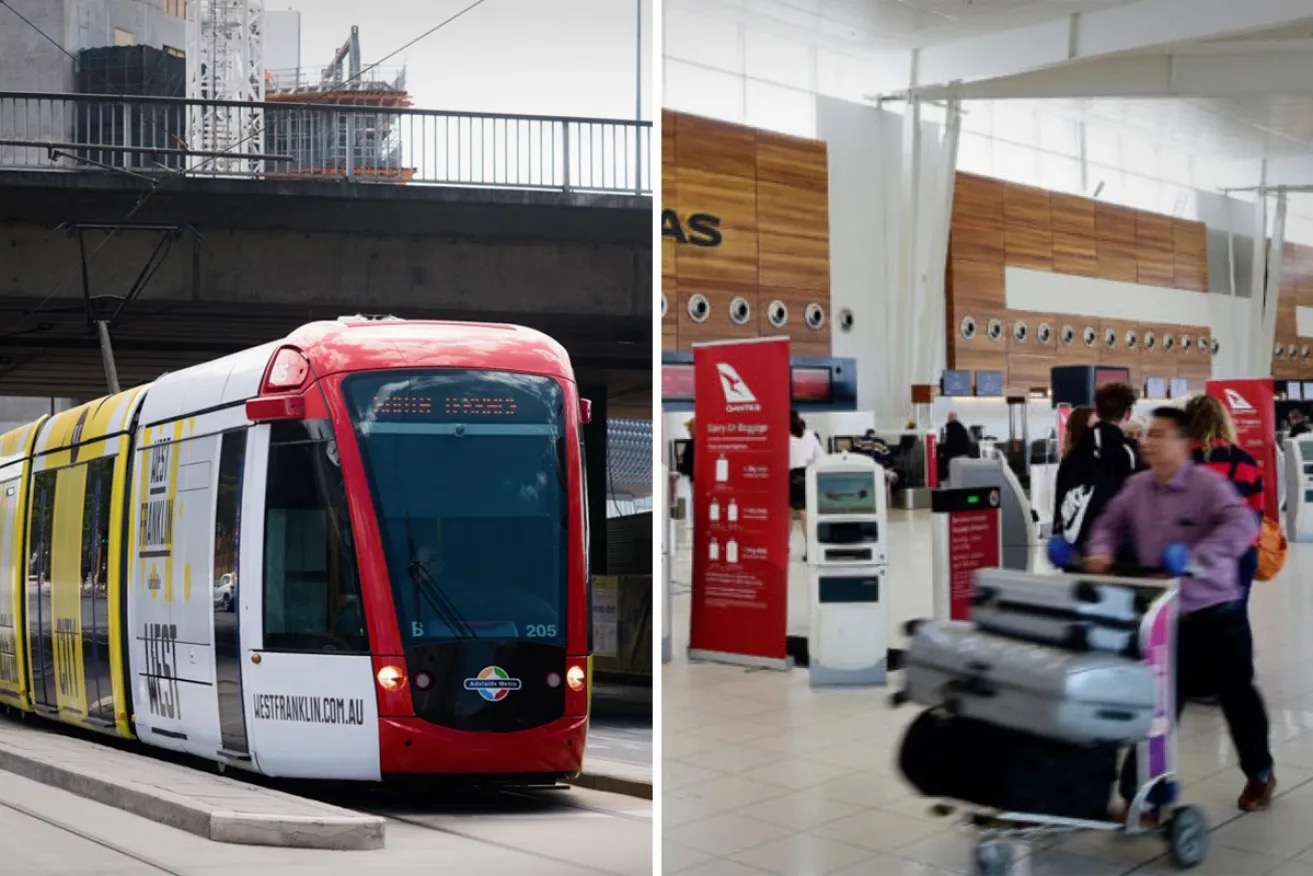The airport, located roughly 6km west of the CBD, currently generates more than 50,000 vehicle movements per day and has projected that number will increase to 126,000 by 2039.
The airport’s 2019 masterplan recorded that more than 95 per cent of trips to Adelaide Airport are by car, taxi or rideshare. Only one per cent are by bus or bicycle.
It comes as the state government’s independent infrastructure agency, Infrastructure SA, continues work on the next 20-Year State Infrastructure Strategy, which is intended to guide state government infrastructure decisions until 2045.
In a submission to Infrastructure SA earlier this year, Adelaide Airport said it was “supportive of efficient access to public transport to and from the airport”.
“The 2019 Adelaide Airport Master Plan has retained land next to the terminal for the provision of a State Government funded high-capacity public transport corridor to the airport,” Adelaide Airport Limited said.
AAL told told InDaily it would be “supportive of an affordable light rail connection from the city”.
“As part of our ongoing ground transport planning we have reserved land from the Sir Donald Bradman Drive intersection along Richard Williams Avenue and terminating adjacent the Atura Hotel for a potential high capacity public transport corridor, providing a direct link with the international and domestic terminal,” a spokesperson said.
“This corridor is included in our most recent Master Plan that sets the course for future development at Adelaide Airport.”
Adelaide City Council also told Infrastructure SA that the state government should be exploring a tram connection to the airport along with extensions to North Adelaide, Prospect and the inner eastern suburbs.
National engineering firm EGIS, meanwhile, submitted that an underground rail link to the airport should be explored – backing an earlier call from public transport lobby group, the Transport Action Network.
EGIS said the underground rail link is a more practical option because an overground rail project would require large land acquisition costs.
The firm also suggested the tunnel boring machines that will be used to dig the North-South Corridor tunnels could be later used to build the underground rail line.
“Adelaide Airport has no connection to rail, currently all travellers are utilising road vehicles to transfer between airport and CBD,” EGIS submitted.
“Restrictions around current access for light rail to the airport to the CBD are constrained, large land acquisition would be required to accommodate rail service.
“Utilise the tunnel boring machines for the Torrens to Darlington Project for a light rail tunnel from Adelaide Airport to Mile End CBD where the tunnel can emerge and the rail to connect to existing Adelaide Metropolitan network.”
EGIS argued the move would bring additional income for the state government because “passenger services would be high due to the service offered”. It also said the service would reduce car use on local roads.
InDaily asked Transport Minister Tom Koutsantonis’ office whether the state government was investigating an Adelaide Airport rail link.
A government spokesperson responded: “The State Government is not currently investigating a rail link between Adelaide Airport and the city, and has no plans to do so.”
Train links between the airport and city centre are common in Europe and also operate in Sydney, Brisbane and Perth.
Melbourne is also building a rail connection between Tullamarine Airport and the CBD which is expected to cost between $8 billion and $13 billion.
Infrastructure SA chief executive Jeremy Conway said Adelaide Airport was advantaged by its closer proximity to the CBD compared to other capital cities. Melbourne Airport, for example, is more than 20km away from the Melbourne city centre.
“Anything that ensures that accessibility is at least maintained, if not enhanced, I think presents an even greater competitive position for Adelaide,” Conway said.
“We’ll have a look at the options around that, we haven’t yet gone into the details as to whether rail is the right solution and if it is the right solution what corridor that is.”
Conway said the shorter distance between Adelaide Airport and the CBD is “going to make some those economics harder for (a rail link) to stack up”.
“In Melbourne, you could be stuck… for an hour trying to get to the CBD whereas that’s not going to happen here,” he said.
“And so, to what extent are you going to be able to force mode shift off when people already have a pretty convenient accessibility to the airport.
“It’s not anything that we dismiss out of hand, we just need to look at what those economics will say.”
The 20-Year State Infrastructure Strategy is due to be presented to government in late 2024 or early 2025.

